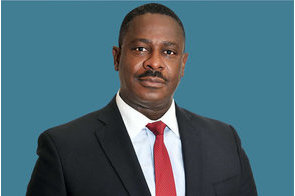World Bank and AfDB collaborating on sovereign risk tool

Summary
The sovereign exposure exchange agreement is a risk management tool collaboratively developed by the major MDBs.
The African Development Bank (AfDB), the Inter-American Development Bank (IDB) and the International Bank for Reconstruction and Development (IBRD) have approved a framework agreement for exchange of sovereign exposures. The framework was designed to collectively optimize the balance sheets of the major Multilateral Development Banks (MDBs) for greater development effectiveness.
The sovereign exposure exchange agreement is a risk management tool collaboratively developed by the major MDBs. The initiative was launched in October 2013 by the World Bank Group’s International Bank for Reconstruction and Development and endorsed by the MDB heads following a meeting of the G8 Ministers of Finance.
Unlike commercial financial institutions, which diversify their loan portfolio across thousands, and sometimes millions, of borrowers, the MDBs lend to their sovereign shareholders. The resulting asset concentration reflects the strength of the relationship between MDBs and their borrowers, but it also requires MDBs to hold additional capital.
Exchanging exposures between MDBs greatly enhances their flexibility and efficiency in capital management. In the past, MDBs have managed their capital concentration risks mainly through reducing or limiting exposure in countries where lending volumes were especially high.
“This innovative agreement improves our collective financial capacity and our development effectiveness,” said Jim Yong Kim, president of the World Bank Group. “The initiative also shows how the multilateral development banks will go to great lengths to be flexible in order to reduce risks.”
President of the IDB, Luis Alberto Moreno, said, “The MDB exposure exchange shows the ability to innovate that regional development banks bring to the table. At the IDB, we are focused on maximizing the resources that we have available to meet the development needs of our dynamic region.”
This initiative was endorsed by the G20 Ministers of Finance in their paper on, “Optimizing MDB Balance Sheets,” and has been discussed at multiple international conferences, including the Financing for Development Forum in Addis Ababa, last July.
“The African Development Bank is pleased to be part of this ground-breaking balance sheet optimization initiative,” said Akinwumi Adesina, President of the African Development Bank Group.
“It is a tangible example of the growing collaboration between Multilateral Development Banks to find creative ways to achieve more development impact. For the African Development Bank, the exposure exchange will have a very significant positive effect on our capital ratios as well as our institutional credit profile. This is critical as we look ahead to an ambitious development program to accelerate progress across Africa.”
On December 15, AfDB, IADB and IBRD approved the first three bilateral exposure exchange agreements within this new framework at a total value of about US$6.5 billion.
Related
-
DFIs pledge $80 billion investments in African businesses over the next five years
DFIs play an important role in helping to build markets, mitigate risk and pave the way for other investors to enter new ...
-
Senegal announces Amadou Hott's candidacy for AfDB President
The Government of Senegal, through the Ministry of African Integration and Foreign Affairs, officially launched the ...
-
AfDB, Islamic Development Bank sign $2 billion deal to fund SMEs, energy projects
The AfDB and IsDB have co-financed projects valued at over $2.5 billion between 2002 and 2016.







